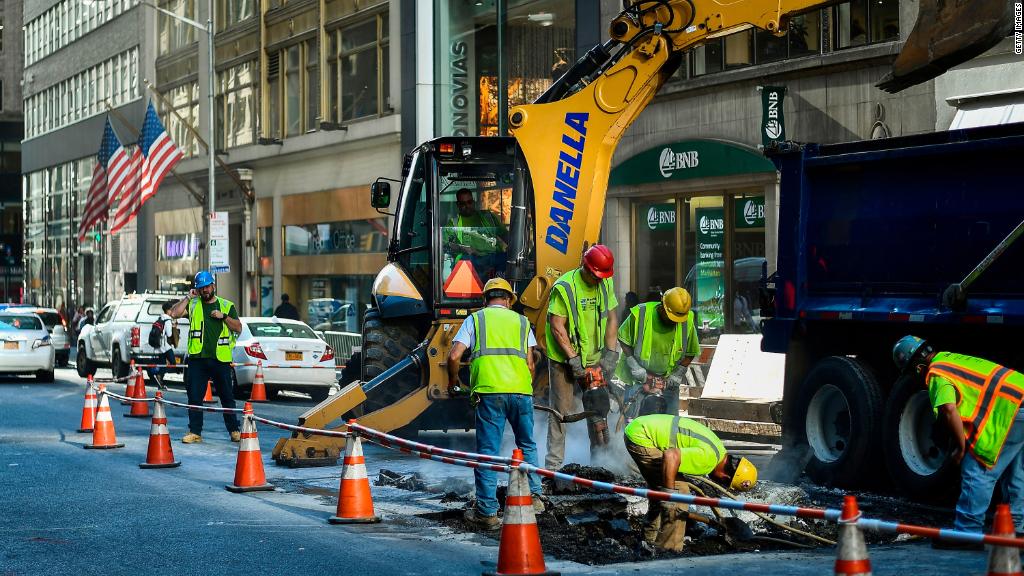
The economy did very well during President Trump's first year: 2 million new jobs, the lowest unemployment in 17 years, accelerating economic growth, booming stock market.
Trump loves to talk about those numbers. But by another measure that he used to talk about a lot -- and has stopped mentioning -- the needle didn't move at all.
During the campaign and early in his presidency, Trump often pointed out how many people were out of the labor force. It's roughly 95 million people, though the numbers change from month to month.
Trump argued that it was a sign of a weak economy run by President Barack Obama.
Related: Americans workers in 2018: Show me the money
"We must honestly acknowledge the circumstances we inherited. Ninety-four million Americans are out of the labor force," Trump told Congress in February 2017.
"96 million really wanting a job and they can't get," he said at a press conference in January 2017. "You know that story. The real number -- that's the real number."
He even told Time magazine in 2015 that the "real unemployment" rate would be closer to 42% if these people were included. "We have a lot of room. We have a lot of people who want to work," he told Time.
The number of Americans out of the workforce is misleading as a gauge of who is and isn't working.
For example, retired people are out of the workforce. They're not counted in the unemployment rate because they don't want a job. The same is true of tens of millions of Americans who are in school, or can't work because they are disabled.
So it's possible for the total number of people out of the workforce to stay more or less the same, even as the overall job market improves.
White House Deputy Press Secretary Lindsay Walters told CNNMoney in a statement on Monday that "the President will continue implementing pro-growth policies that will boost the economy and strengthen the American workforce."
She added that the administration is focused on reducing the mismatch between the skills workers have and those that employers want, and on the opioid crisis, both of which prevent many people from getting a job.
Related: U.S. economy added 2 million jobs in December
Walters pointed out that the number of unemployed Americans declined by 1 million last year. Those workers are considered part of the workforce because they looked for a job in the past month. They're not a part of the 95 million figure, which has increased over the years as more Baby Boomers retire.
The 95 million figure isn't a good measure of the talent left on the sidelines of America's job market.
"The overwhelming majority of the people in this group are unlikely to enter the labor market under almost any circumstances," says Guy Berger, chief economist at LinkedIn.
Related: U.S. dollar hits 3-month low to start 2018
Here's the breakdown of the 95 million Americans who weren't working, according to the latest figures from the Atlanta Federal Reserve, which conducted a review based on figures through September:
-- 94.6 million people above the age of 16 were out of the workforce.
Of those:
-- 44.5 million were retired.
-- 14.5 million were in school or job training.
-- 12.8 million were taking care of a loved one.
-- 15.3 million weren't working because of an illness or disability.
In all, of the 94.6 million not working, 87.1 million were retired, in school, taking care of a loved one or physically unable to work.
That leaves 7.5 million people. What about them?
Of those, 1.6 million had looked for a job in the past year or wanted a job but had given up searching for more than a year. And 5.9 million workers listed "other" as a reason for not wanting or having a job. We don't know much about these workers.


